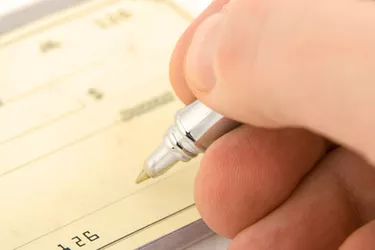
When you write a check, the bank that cashes it uses the routing number to determine which bank the check is coming from. The American Banking Association assigns routing numbers to banks, credit unions and other financial institutions. Routing numbers have been used since 1910. The routing number on a check is found in the lower left-hand corner of the check and is a nine-digit number. The final digit of the routing number is a check digit, meaning it can be calculated from the first eight digits as a way to prevent bad checks.
Step 1
Multiply the first, fourth and seventh numbers in the routing number by 3. For example, if your routing number was 123456780, you would multiply 1, 4 and 7 by 3 to get 3, 12 and 21.
Video of the Day
Step 2
Multiply the second, fifth and eighth digit in the routing number by 7. Continuing the example, with a routing number of 123456780, you would multiply 2, 5 and 8 by 7 to get 14, 35 and 56.
Step 3
Multiply the third and sixth digit in the routing number by 1. In this example with, you would multiply 3 and 6 by 1 to get 3 and 6.
Step 4
Add the products from the first three steps. In this example, you would add 3, 12, 21, 14, 35, 56, 3 and 6 to get a total of 150.
Step 5
Find the next highest multiple of 10, or use the result from Step 4 if it is a multiple of 10. In this example, 150 is a multiple of 10 so you use 150. However, if the result had been 151, you would have used 160.
Step 6
Subtract sum of the products from the next highest multiple of 10 to find the check digit. In this example, you would subtract 150 from 150 to find that the check digit would be 0, which is the last digit in the routing number.
Video of the Day